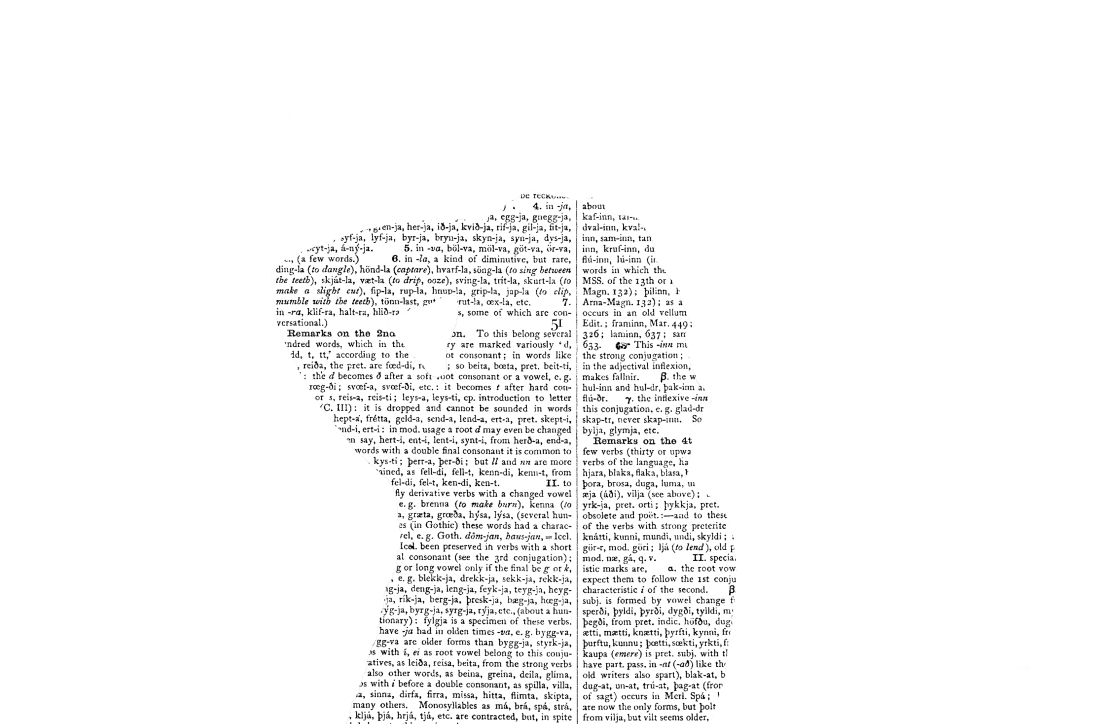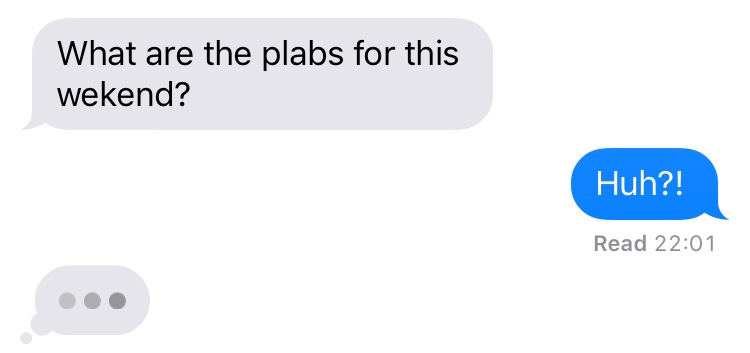
We’ve all without a doubt received a text like this at some point.

One way or another we’ve been able to decipher it but is this down to our reading ability?
Language, in of itself is one of the fastest evolving beasts of modern times. In only the past two years we’ve all become accustomed to such phrases as, Fake News, Photobombing or Brexit. Words and phrases previously unthinkable and of literally no meaning but now common tongue. In addition, we have also developed an uncanny ability to produce and converse through the use of acronyms; RBF, IMHO, SO, etc. But is this our expanding and evolving ability to read or is it just simple puzzle solving.
We all have our own individual quirks when it comes to language be it verbally and or in the written form. An argument could be made foreach of us having our own personal language but even with these quirks we are able to communicate with relative ease. Language on a personal level is ever evolving when we interact with new persons and cultures. For each plays with the language more is birthed but before any of this it all begins with infancy. A couple of years back a video circulated of two diapered infants seemingly having a charming everyday conversation as they went about their kitchen duties but their conversation was constructed of nothing more than gibberish and nonsense. It has been noted that the simple act of reading to an infant or talking around them allows their brain to pick up and process the building blocks of language from the earliest of ages. However it has not yet been proven whether the da da’s that babies produce are just noise or whether actual attempts to say the words dad or daddy. From the video though there is something strikingly obvious, there is rhythm and pattern to their nonsensical language which is the very essence of language, the ability to identify patterns and rhythms. This is how we learn the rules of reading by identifying recurring themes and the same applies to the spoken word.
The field of psycholinguistics and brain activity surrounding linguistics is a hotly contested topic, especially in terms of how we, as people, read. What is the brain doing? How do we interpret text to an understanding? Etc. In a paper published on PLoS (Public Library of Science) from 2014 a team of researchers took a novel approach to see how the brain works while reading. They had subjects read for 45 minutes from a chapter of Harry Potter and the Philosophers Stone, specifically Chapter 9: The Midnight Duel, and measured their brain activity via fMRI. They then produced a Computer Model which, with 74% accuracy, could determine at which point in the chapter the subject was at via their brain activity. They also discovered that the brain activity while reading was not central to a single or concentrated area but instead took in a multitude of mental functionalities. For instance when reading about a character performing a physical action the brain activity moved to a part of the brain associated with performing an action in real life. Similar was found for when reading dialogue where in the brain activated an area used to imagine other persons thoughts or dreams. The results of this data are still being applied to all kinds of other potential studies but what this does show, unequivocally, is the scope, extent and variety of brain function actually involved within the simple act of reading. Activities so unique we are able to determine what a person is potentially reading be it a characters dialogue or actions or a description.
Even without looking in to the full functions of the brain while reading, reading itself is a very odd beast. It is the pinnacle of self progression from a young age we are taught the basics of reading (phonetics, vowels, the alphabet, etc.) and then we are left to our own devices to ensure our survival in the growing literature filled world ahead of us. Near all reading knowledge is garnered through a continued and constant self-pursuit of our own personal reading capability yet even under such circumstances we have garnered a uniform system for identifying and understanding words. Of course there are occasions contrary to this rule but that is the ailment of self teaching there is only yourself and growing understanding to correct oneself. The mispronunciation of words on to itself is only dictum to my point. Mispronunciations are the purest showcases of self teaching and ones strive and tenacity to learn and adapt to the new challenges they face, for instance some one very close to me pronounces Iguana, ig-u-ana instead of the ig-wana and nothing could be more sincere or encapsulate a progression from childhood onwards.
While we have been taught the rules and built around the basics. The mind is, supposedly, easily able to deviate from the rules as the internet showcased in 2003. During the summer of 2003 the great minds of the University of Cambridge made a startling breakthrough in their Cognition and Brain Sciences Unit, they had discovered that the mind was capable of extraordinary reading feats…
Aoccdrnig to a rscheearch at Cmabrigde Uinervtisy, it deosn’t mttaer in waht oredr the ltteers in a wrod are, the olny iprmoetnt tihng is taht the frist and lsat ltteer be at the rghit pclae. The rset can be a toatl mses and you can sitll raed it wouthit porbelm. Tihs is bcuseae the huamn mnid deos not raed ervey lteter by istlef, but the wrod as a wlohe.
Near enough everyone is able to read the above (apologies if you can’t). According to their research they had discovered that people didn’t read words letter by letter but simply the word as a whole and it didn’t matter where the letters came as long as the first and last letters were correctly placed. The minds ability to read the above is incredible and entirely false, in fact the entire piece of text is false. No such research had been conducted by the University of Cambridge, neither here nor in the States, as Matthew Davis recalled in his response to the above paragraph. Davis was working in the Cognition and Brain Sciences Unit at the time and he nor any of his colleagues had conducted such research. Yes, you can read the above but not for the reasons you think, as Davis explained in his detailed breakdown of the so called internet phenomenon. It is in fact a simple logic puzzle, comprised of 69 words, of those only 37 are jumbled and of these 37 12 are four letter words of which you can only swap two of the letters which leaves only 25 words to unscramble.
From here on in the brain does brilliant things to allow us to ‘read’ the paragraph by using patterns and assumptions to complete the task. The mind is annoyingly good at assuming what is to come next before we can realistically register it. ‘This is…’ Now did you have a hard time not adding either ‘because’ or ‘due’ to the that You may or may not have registered it but the mind will try to auto-complete sentences due to its familiarity and the connectivity of certain words and so we read sentences without fully reading them. This is particularly evident with function words; the, you and and. We skip over these words barely taking them in and instead we are just presented with a sense of understanding. The featured paragraph also plays by a specific set of rules setting in place it’s own pattern for example the words preserve their sound, toatl v. ttoal. The upmost is also done not to create another word within the muddling, if we were to take the word salt and muddle it to slat it is impossible to discern whether I’m talking about slat or salt or have I in fact mixed slat for salt and salt for slat. What it does most brilliantly however is preserve word shaping, the mind excels at recognising shape and form, it intrinsically remembers and recognises the rise and falls within a word and how a word effectively and distinctively splits itself. If we take the phrase ‘without problem’ it has a very distinctive shape and in a addition the heights of the ‘t’ and ‘h’ split the ‘with’ from the ‘out’ and so we are able to read it as with-out. Problem uses it’s ‘b’ and ‘l’ to the same effect within the passage. The paragraph messes around the letters to produce wouthit porbelm but if we were to mess with the shape and produce wtohuit plroebm. We can still ‘read’ it but our pace slows as figure out the new pattern of the word therefore producing a new rule in the puzzle which our mind has to adapt to.
So are we able to read it or are we just able to find the rules of the pattern and complete the puzzle. Is this how we are able to read such confounding texts as I first presented to you, are we able to take the rules that we have unconsciously established through our communiqués with a certain person or party and therefore are able to fit the final piece of the puzzle. Is it a case of reading a mis-typed text or figuring it out, to add a little personal and real world gravitas to all this. When messaging with my younger brother I am wary of reading what he types at face value as due to his dyslexia, his messages can come through as a complete jumble and can sometimes take me a moment to figure out what he’s saying. I normally do so by going back over previous texts or piecing together how the beginning mutates to the conclusion of the text. It’s all logic and puzzles. The mind is an incredible thing and reading is just something we’ve come to use to define the act of consuming text but clearly far more is happening in our brains than just ‘reading’.